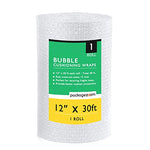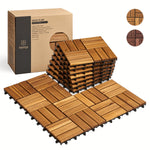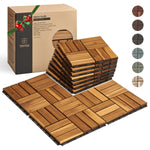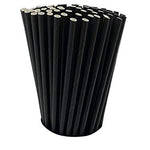You have no items in your shopping cart.
Embracing the concept of sustainable gardening has become more vital than ever in our efforts to protect the environment. A greenhouse roof offers an innovative solution that not only benefits the planet but also enhances the quality and yield of your plants. In this article, we will dive deep into the fascinating world of greenhouse roofs, covering everything from their types and advantages to essential maintenance tips. Join us on this journey to discover how greenhouse roofs can revolutionize your gardening experience.
Greenhouse Roof: What is it?
A greenhouse roof is a specialized roofing structure that enables controlled cultivation of plants under optimal environmental conditions. It functions as an extension of traditional greenhouses, offering various advantages over conventional gardening methods.
Types of Greenhouse Roofs
There are several types of greenhouse roofs, each designed to cater to different gardening needs. Let's explore some of the most popular ones:
1. Flat Greenhouse Roofs
Flat greenhouse roofs are a classic choice known for their simplicity and ease of installation. They offer ample space for plant cultivation and can be an excellent option for small-scale gardening.
2. Gable Greenhouse Roofs
Gable greenhouse roofs feature a peaked design, providing increased vertical space. This design is ideal for plants that require extra height or for gardeners who prefer a spacious interior.
3. Arched Greenhouse Roofs
Arched greenhouse roofs create a unique and stylish aesthetic while optimizing natural light exposure. They are particularly suitable for climates with heavy snowfall, as the rounded shape prevents snow buildup.
4. Dome Greenhouse Roofs
Dome greenhouse roofs are gaining popularity due to their energy-efficient design. The spherical shape reduces surface area, resulting in improved heat retention and airflow.
5. Sawtooth Greenhouse Roofs
Sawtooth greenhouse roofs consist of a series of ridges and valleys, providing excellent ventilation and controlled sunlight exposure. This design is perfect for maintaining a consistent climate within the greenhouse.
6. Curved Greenhouse Roofs
Curved greenhouse roofs offer an appealing and modern look while effectively dispersing rainwater. They are known for their durability and resistance to harsh weather conditions.
Benefits of Greenhouse Roofs
The utilization of a greenhouse roof presents a wide array of benefits for gardeners and the environment. Let's explore the advantages of incorporating a greenhouse roof into your gardening practices:
Optimal Growing Conditions
A greenhouse roof allows you to control crucial environmental factors like temperature, humidity, and light. This control results in an extended growing season and better crop yields.
Protection from Extreme Weather
With a greenhouse roof in place, your plants are shielded from extreme weather events such as hailstorms, heavy rains, and excessive sunlight, providing a safe haven for their growth.
Pest and Disease Prevention
Greenhouse roofs act as a physical barrier, preventing pests and diseases from reaching your plants. This reduction in exposure helps maintain healthy and vibrant vegetation.
Water Conservation
Greenhouse roofs facilitate efficient water usage, as the enclosed space minimizes evaporation. This eco-friendly approach contributes to overall water conservation efforts.
Year-Round Gardening
By creating an insulated environment, a greenhouse roof enables year-round gardening, allowing you to grow crops even in the coldest months.
Enhanced Aesthetic Appeal
In addition to their functional benefits, greenhouse roofs add an attractive touch to your garden, enhancing its overall aesthetic appeal.
Selecting the Right Greenhouse Roof
Choosing the perfect greenhouse roof requires careful consideration of various factors. Let's explore the key aspects you should keep in mind:
Climate Compatibility
Select a greenhouse roof design that complements the climate in your region. Consider factors like temperature fluctuations, humidity levels, and seasonal changes.
Space and Layout
Evaluate the available space and layout of your garden to determine the most suitable greenhouse roof type and size.
Material Durability
Opt for high-quality materials that ensure durability and long-lasting performance. Polycarbonate and glass are popular choices due to their strength and transparency.
Ventilation and Airflow
Ensure that the greenhouse roof design provides adequate ventilation and airflow to maintain a healthy growing environment for your plants.
Energy Efficiency
Consider the greenhouse roof's energy efficiency, as this can have a significant impact on your utility bills and overall environmental footprint.
Greenhouse Roof Installation
The process of installing a greenhouse roof may seem daunting, but with proper planning and preparation, it can be a rewarding DIY project. Here's a step-by-step guide to help you get started:
-
Assessment and Planning
- Conduct a thorough assessment of your garden space to determine the optimal location for the greenhouse roof.
- Create a detailed plan that includes the greenhouse roof type, dimensions, and required materials.
-
Foundation Preparation
- Prepare the foundation by clearing the area of any debris or vegetation.
- Level the ground to ensure a stable base for the greenhouse roof.
-
Frame Assembly
- Assemble the greenhouse roof frame according to the manufacturer's instructions.
- Double-check all connections to ensure stability and structural integrity.
-
Covering Installation
- Install the chosen covering material, such as polycarbonate panels or greenhouse-grade glass.
- Secure the covering firmly to withstand weather elements.
-
Ventilation and Temperature Control
- Integrate ventilation systems like louvers or roof vents to regulate temperature and humidity.
- Install a thermostat or automated system to monitor and adjust the internal climate.
-
Finishing Touches
- Add finishing touches like gutters to manage rainwater runoff effectively.
- Inspect the entire structure to ensure it is secure and safe for use.
-
Planting and Cultivation
- Once the greenhouse roof is ready, start planting and cultivating your chosen crops.
- Monitor the environment regularly and make necessary adjustments to optimize growth.
Maintaining Your Greenhouse Roof
Proper maintenance is crucial to ensure the longevity and performance of your greenhouse roof. Follow these maintenance tips to keep your garden thriving:
- Regularly inspect the covering for cracks, tears, or damage. Replace damaged parts promptly.
- Clean the greenhouse roof to remove dirt, debris, and algae buildup that can hinder sunlight penetration.
- Monitor and adjust the ventilation system to maintain optimal temperature and humidity levels.
- Keep an eye out for pests and diseases, and take appropriate measures to control them effectively.
- Trim overgrown vegetation inside the greenhouse to prevent shading and ensure even sunlight distribution.
Frequently Asked Questions (FAQs)
Q: How much does it cost to install a greenhouse roof? A: The cost of installing a greenhouse roof can vary depending on the size, materials, and complexity of the design. On average, it can range from a few hundred to several thousand dollars.
Q: Can I install a greenhouse roof on my existing garden shed? A: Yes, if your garden shed's structure is strong enough to support the additional weight and has sufficient height, you can install a greenhouse roof on it.
Q: Do I need a building permit to install a greenhouse roof? A: The need for a building permit varies by location and the size of the greenhouse roof. Check with your local authorities to ensure compliance with building regulations.
Q: What crops can I grow in a greenhouse roof? A: A greenhouse roof offers a versatile growing environment, allowing you to cultivate a wide range of crops. Common choices include tomatoes, cucumbers, peppers, herbs, and flowers.
Q: Are greenhouse roofs environmentally friendly? A: Yes, greenhouse roofs are eco-friendly as they promote sustainable gardening practices by conserving water and reducing pesticide use.
Q: Can a greenhouse roof withstand harsh weather conditions? A: Greenhouse roofs are designed to be sturdy and durable, capable of withstanding various weather conditions. However, it's essential to choose a design suitable for your region's specific climate.
Embracing the concept of a greenhouse roof opens a world of possibilities for sustainable gardening and improved plant cultivation. From their various types and benefits to installation and maintenance tips, we have explored the ins and outs of this innovative gardening solution. By incorporating a greenhouse roof into your gardening practices, you not only create an eco-friendly environment but also unlock the potential for year-round, bountiful harvests. Get ready to elevate your gardening experience and take a step towards a greener future with a greenhouse roof.








